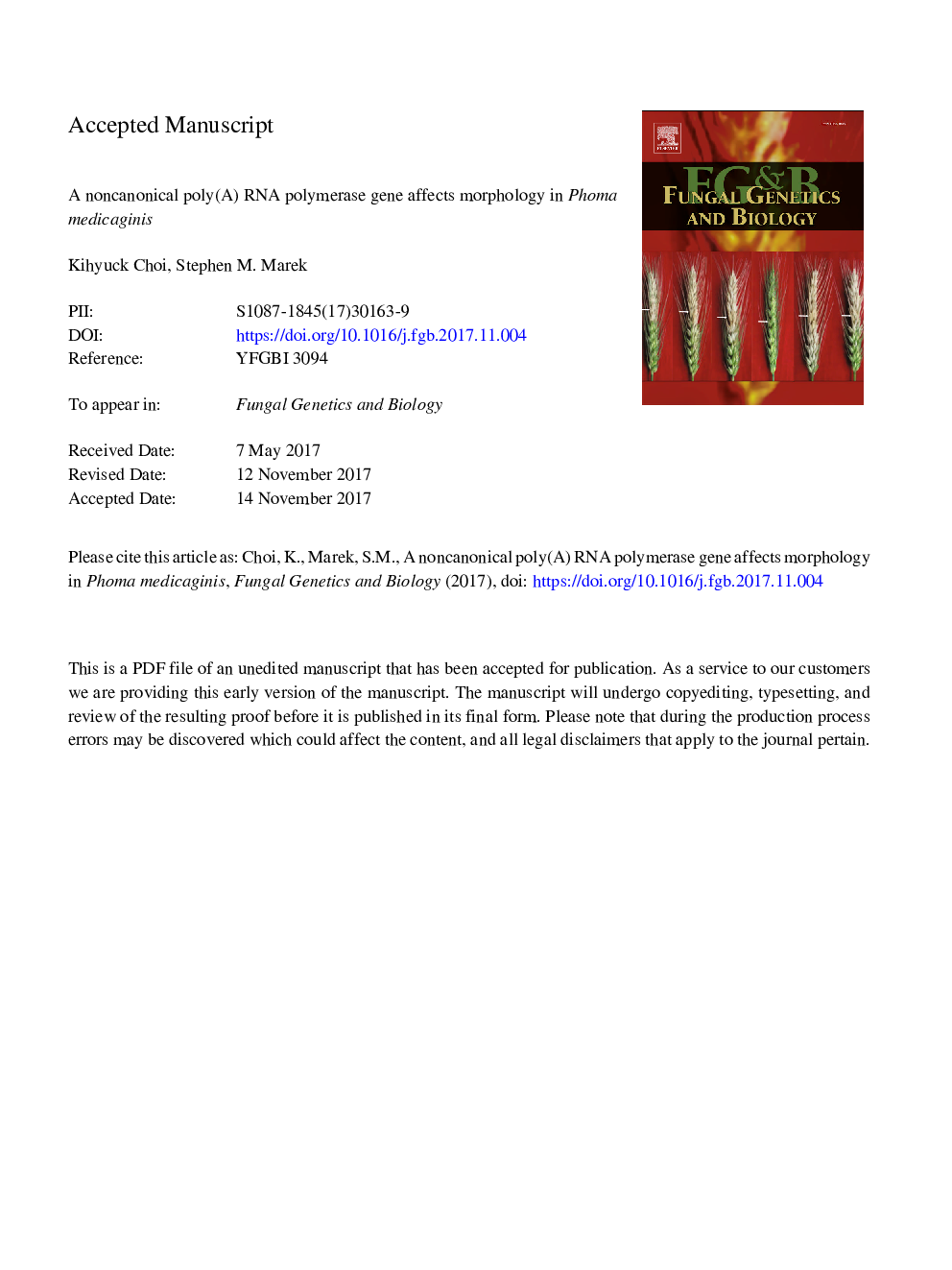| Article ID | Journal | Published Year | Pages | File Type |
|---|---|---|---|---|
| 8470457 | Fungal Genetics and Biology | 2018 | 48 Pages |
Abstract
Phoma medicaginis (syn. Ascochyta medicaginicola Qchen & L. Cai) causes spring black stem and leaf spot, an important disease of alfalfa and annual medics. P. medicaginis forms uninucleate conidia in melanized pycnidia and is genetically tractable using Agrobacterium mediated transformation (ATMT), resulting in random integration of T-DNA that occasionally generates pycnidial mutants. The T-DNA tagged mutant, P265 displayed smaller pycnidia and more aerial hyphae than the wild type. A single T-DNA disrupted a putative noncanonical poly(A) RNA polymerase gene, Pmncpap1, which in yeast interacts with ribonucleotide reductase (RNR). As in yeast mutants, P265 showed sensitivity to hydroxyurea (HU), a RNR inhibitor. To characterize the role of Pmncpap1, targeted ÎPmncpap1 mutants were created using a hygromycin selectable marker flanked by 1â¯Kbp regions of Pmncpap1. ÎPmncpap1 mutants possessed similar morphological features to those of P265. The plasmid for rescue of PmncPAP1, pCAMâNat1 (nourseothricin selection) was constructed and used to introduce full-length PmncPAP1 into mutants. Rescued P265 showed partial recovery of wild type and the original T-DNA was lost due to homologous integration. To our knowledge, this is the first ncPAP to be examined in a filamentous fungus.
Keywords
Related Topics
Life Sciences
Biochemistry, Genetics and Molecular Biology
Cell Biology
Authors
Kihyuck Choi, Stephen M. Marek,
